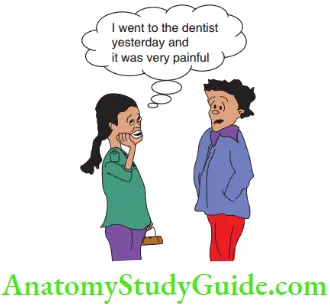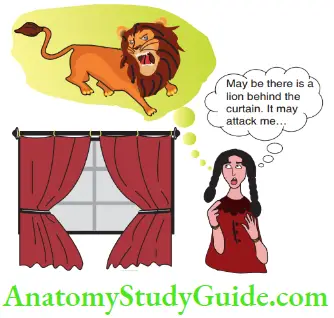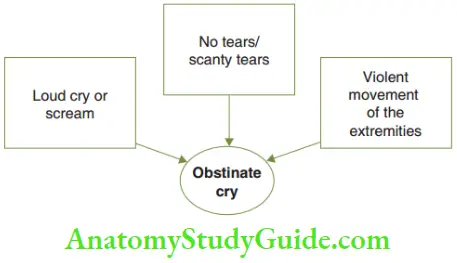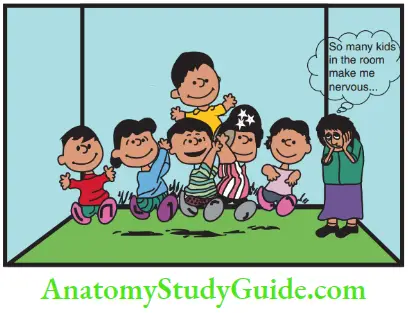Scientific Understanding Of Child Behaviour Introduction
- Efficient and effective dental care instils a positive dental attitude in children. This is possible with the refinement of the attitude of the dentist and the redefinition of the workplace.
- Refinement of the attitude helps the dentist to change the way of seeing children. There are many modes of attitude refinement. Understanding the immature emotions of children is the initial step towards refining the dentist’s attitude.
Read And Learn More: Paediatric Dentistry Notes
Table of Contents
- A keen observation backed with scientific knowledge can help a clinician to identify the presence of immature emotions in a child. On identification of immature emotions, the behavioural presentation may be observed deeper.
- This understanding is highly useful to study and select the most appropriate behaviour management strategy during a dental appointment.
Understanding Immature Emotions
The behaviour of a child is a composite reflection of immature emotions. A child’s behavioural presentation is influenced by a multitude of immature emotions including fear, anxiety, crying, anger and phobia.
1. Fear

Fear is the reaction to a known danger. Fear causes psychological changes in the child’s mind and physiological changes in the child’s body. The psychophysiological changes are in response to a threat of the child’s own existence. As a result, the child attempts to avoid the fearful situation and takes the ‘flight mode’ to get out of the situation.
These types of fear are displayed by children. They are innate, subjective and objective fears.
- Innate fear: This is the inborn or the baseline level of fear of an individual. It measures the vulnerability of the individual to a virtual/real fear-provoking stimulus.
- Subjective fear: An individual is subjected to fear by family members (parents), peers (friends and siblings), media (television and movies) or scriptures (cartoons). Suggestive subjective fear is based on the real experience of the parents, siblings or friends, etc. Imaginative subjective fear is based on the pure creativity of anybody or any factor.

- Objective fear: It occurs due to one’s own earlier bad experience (bad dental experience). When a child undergoes a painful episode in a medical set-up (during vein puncture) or a dental operatory the fear of the next medical/dental visit culminates in the child.

2. Anxiety
Anxiety is the reaction to an unknown danger. It is influenced by the imaginative capacity of the individual, coupled with past experiences. It takes a little longer time to be displayed when compared with fear. It is exhibited by the child who is in a strange situation. The stimulus of anxiety may be real/imaginary.

3. Cry
The cry is an emotion of its own and a path of outbursts of other emotions such as fear and anxiety. Elsbach classified cry into four types in 1963. They are as follows:
- Frightened cry: This is displayed by a fearful or anxious child. It is characterised by a torrent of tears, breath-catching sobs and mild physical refusal to treatment.

- Hurt cry: This is displayed by a child in pain during the treatment procedure. The cry is accompanied by a small whimper. The eyes ‘well’ up with tears and a single drop of tear subsequently sheds from the corner of the eye.
- Obstinate cry: This type of cry is displayed by children who would want to evade/avoid the treat ment being done on them, even when it is painless. It is characterised by a loud cry or scream and violent movements of the body and extremities. Hardly any tears or scanty tears are seen. It is accompanied by the child’s conscious effort to become more talkative while the treatment is attempted. It is a time-wasting tactic. The cry stops when the treatment is completed or discontinued as the primary aim of the cry is to avert the procedures

- Compensatory cry: This is not an organic cry. It is an attempt by the child to create a vent to display his discomfort. The cry is of a low monotonous one with no tears at all. There is no physical refusal to receive treatment. The cry synchronises in timing with the activity of the procedure. The cry extinguishes when the treatment is paused and begins again when the treatment commences.

4. Anger
Anger is less relevant in a dental setup. However, children who have a strong ego in getting things done their way may become angry. The anger could be displayed by the following methods:

- Undesirable violent acts such as throwing, kicking or consciously damaging instruments and materials in the dental set-up
- Obstinate cry
- Indulging in physical harm to the dentist, assistant and parents
- Non-violent refusal to accept treatment like tightly clenching the teeth, not to be let open
5. Phobia
Phobia refers to the conscious avoidance of a particular element, object, situation or experience. It is an arbitrary, unreasonable and persistent reaction that is not in the control of the person himself. All other immature emotions may mature and disappear with age but phobia does not get eliminated with time.

Scientific Understanding Of Child Behaviour Summary
- Refining one’s attitude to treat children efficiently can happen with a scientific understanding of a child’s behaviour.
- The display of a child’s immature behaviour may consist of one or more of the following:
- Fear – reaction to known danger:
- When baseline levels of inherent vulnerability are high, it is termed innate fear.
- When fear has been subjected into the child by parents/peers, it is termed subjective fear.
- When fear is incurred due to one’s own experience, it is termed objective fear.
- Fear – reaction to known danger:
- Anxiety – unpleasant reaction to a known danger.
- Cry – can be one of the following types:
- Frightened cry – displayed by a fearful/anxious child.
- Hurt cry – displayed when the child is in pain.
- Obstinate cry – displayed to thwart dental treatment.
- Compensatory cry – displayed to vent one’s discomfort.
- Anger – absolutely unacceptable, less relevant and occasionally demonstrated by a child in the dental operatory.
- Phobia – unexplained conscious avoidance of an otherwise acceptable object/situation
Leave a Reply